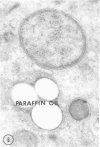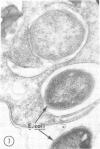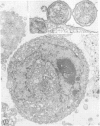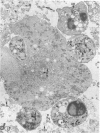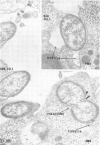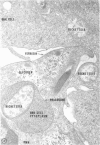Abstract
The invasion of Rickettsia tsutsugamushi, Gilliam strain, into guinea pig polymorphonuclear leukocytes (PMNs) and the localization and distribution of tracers were followed during the process by electron microscopy. The seven tracers used were: cationized ferritin, ferritin, thorium dioxide (ThO2), carbon particles, latex spheres, paraffin oil, and Escherichia coli. These markers were added to the incubation medium containing the PMNs before or simultaneously with R. tsutsugamushi-infected BHK-21 cells. Both morphologically intact and degenerating rickettsiae were present in the phagosomes in PMNs, but only the viable-appearing rickettsiae were free in the cytoplasm. The intact rickettsiae were singly and selectively phagocytized in tightly enclosed phagosomal membranes which usually excluded the tracers, except when ThO2 or ferritin was used. When ThO2, which labels the plasma membrane of PMNs, was used. ThO2-labeled phagosomal membranes enclosing rickettsiae were observed and short membrane fragments still labeled with this tracer were found in the vicinity of rickettsiae in the cytoplasmic matrix of PMNs. When ferritin or ThO2 was used as a tracer, some of the phagosomes contained rickettsiae still enclosed in an envelope of BHK-21 cytoplasm and cell membrane. Phagolysosomes preloaded with electron-dense markers fused with subsequently formed phagosomes containing degenerated rickettsiae but not with those containing intact rickettsiae. These results support our interpretation that viable rickettsial entry into PMNs is by selective phagocytosis and escape from these phagosomes.
Full text
PDF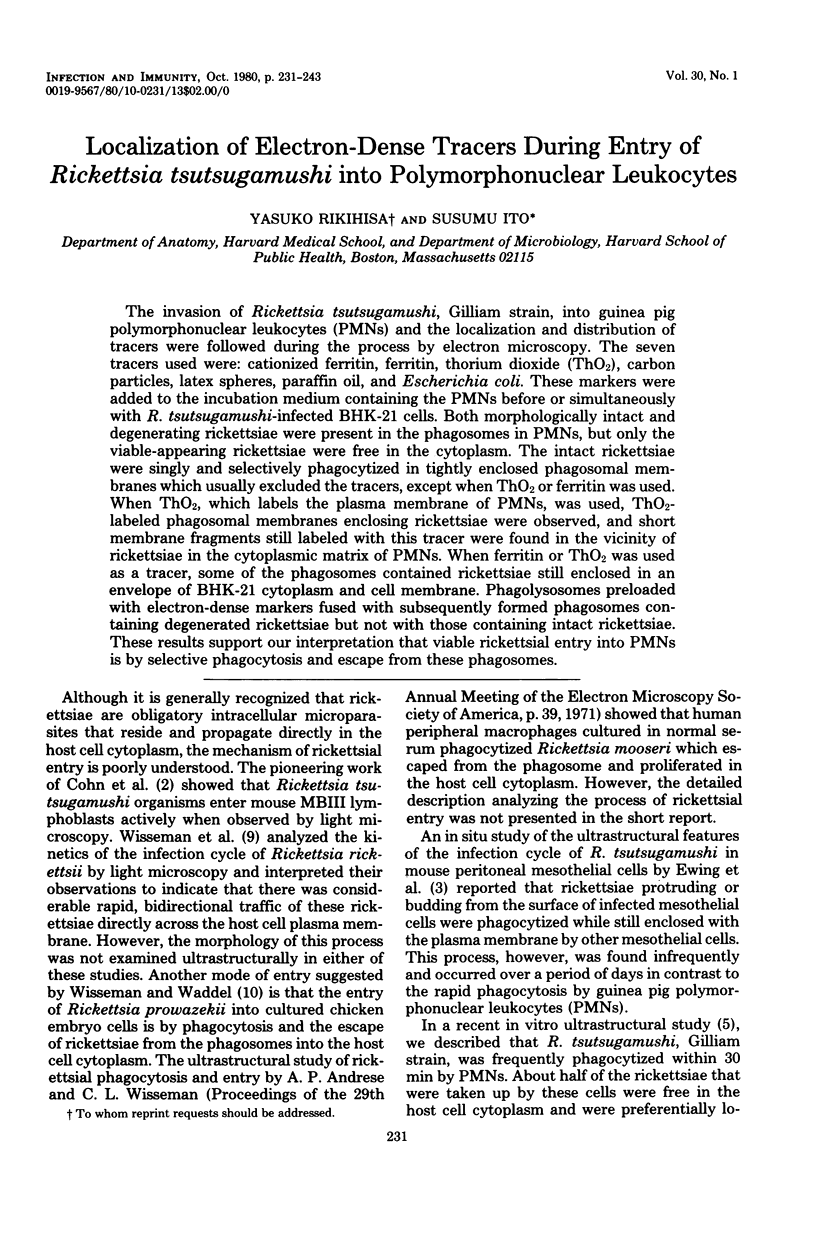
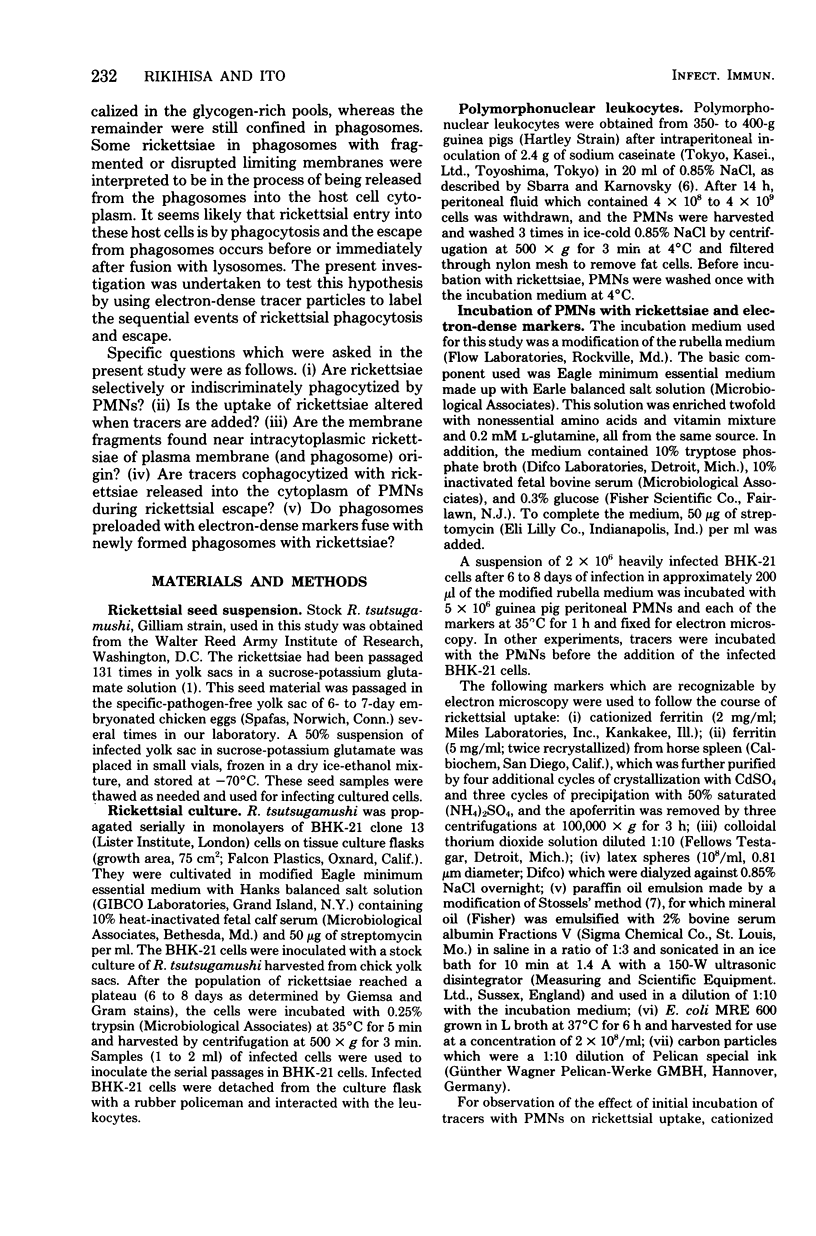
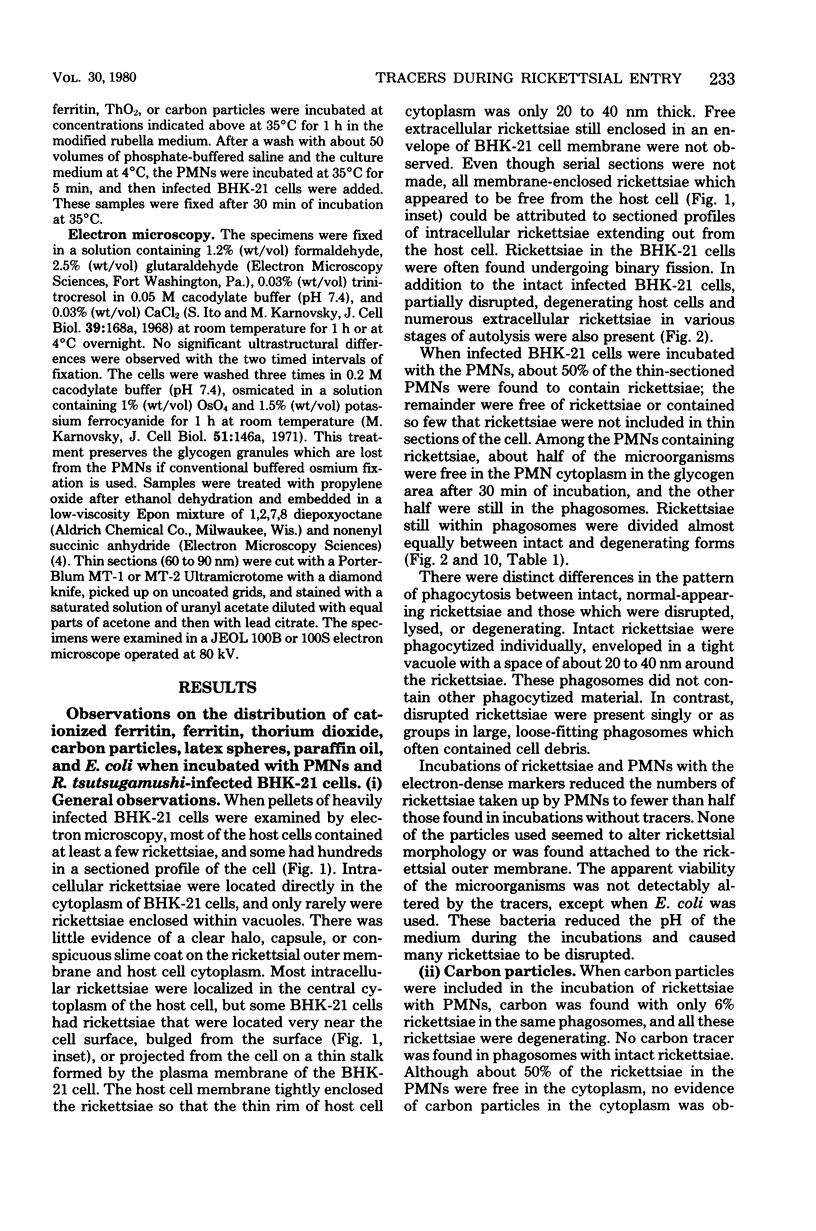
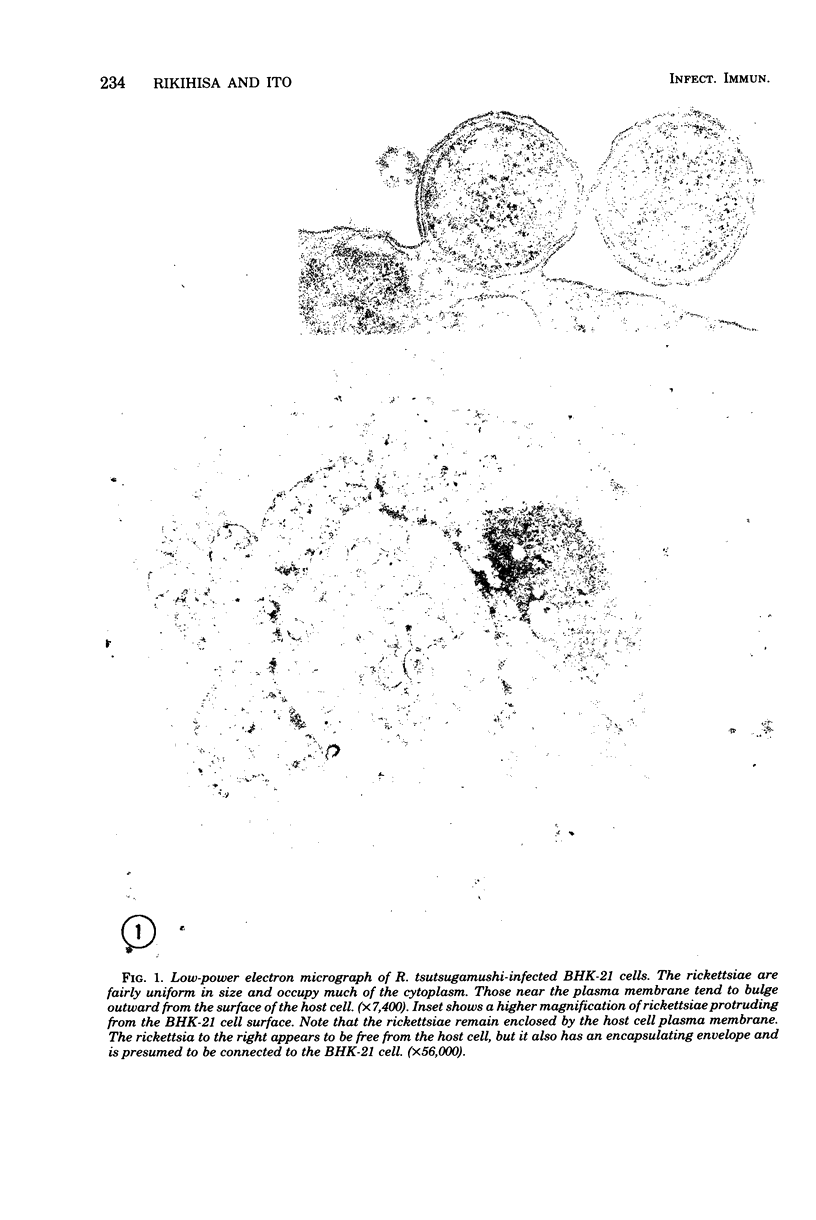
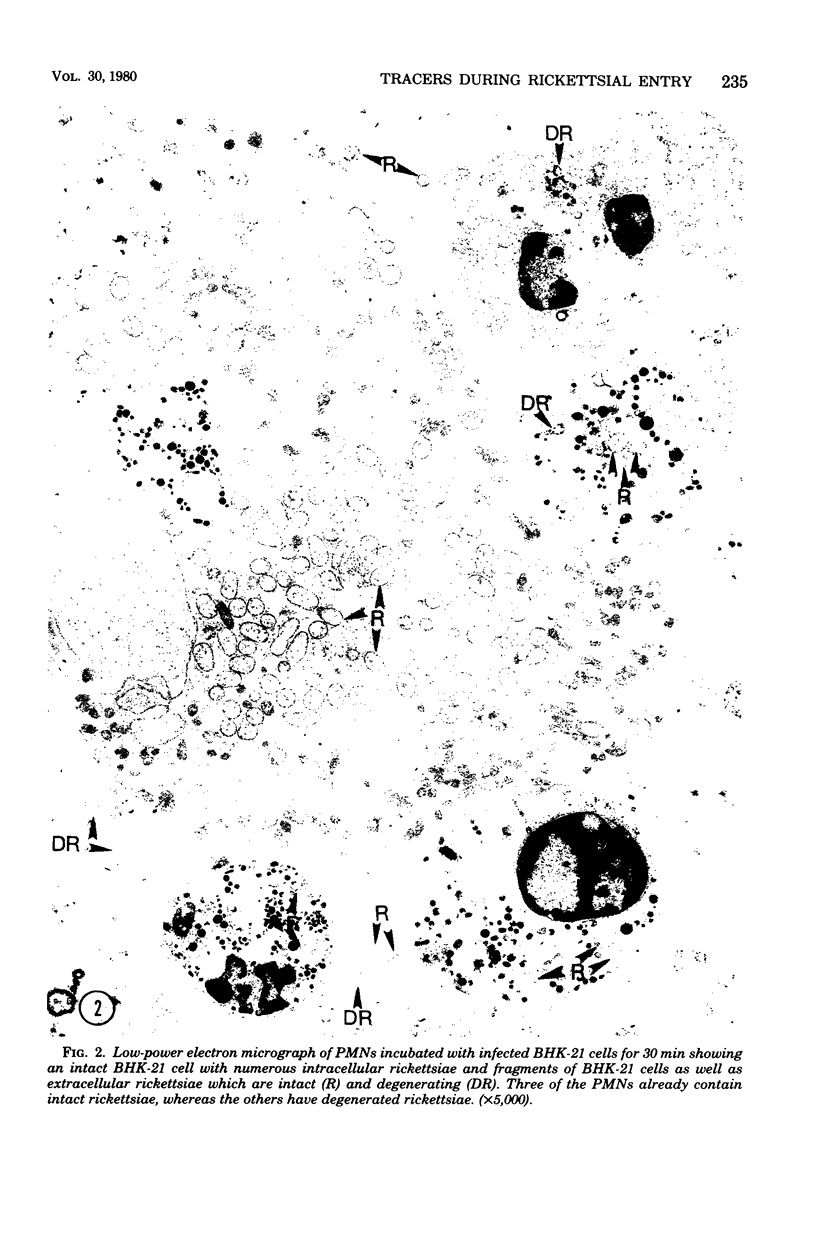
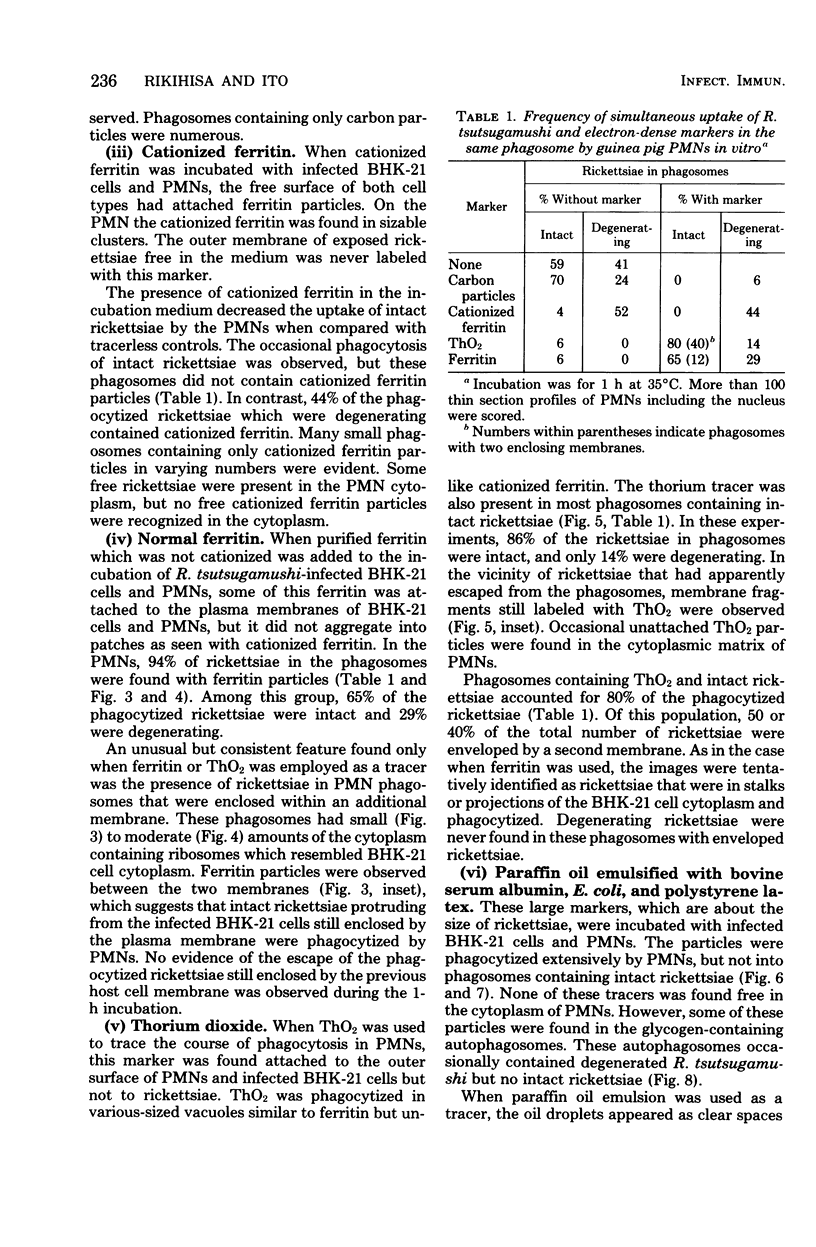
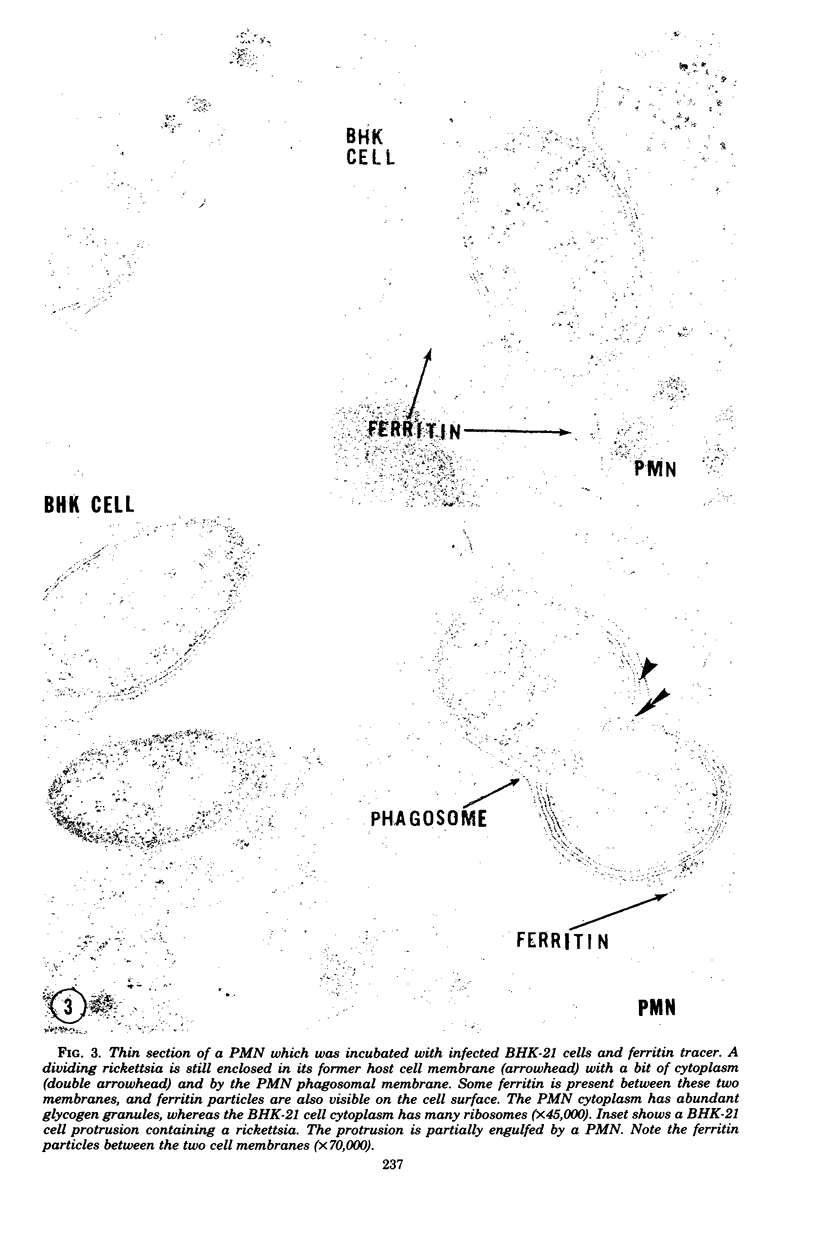
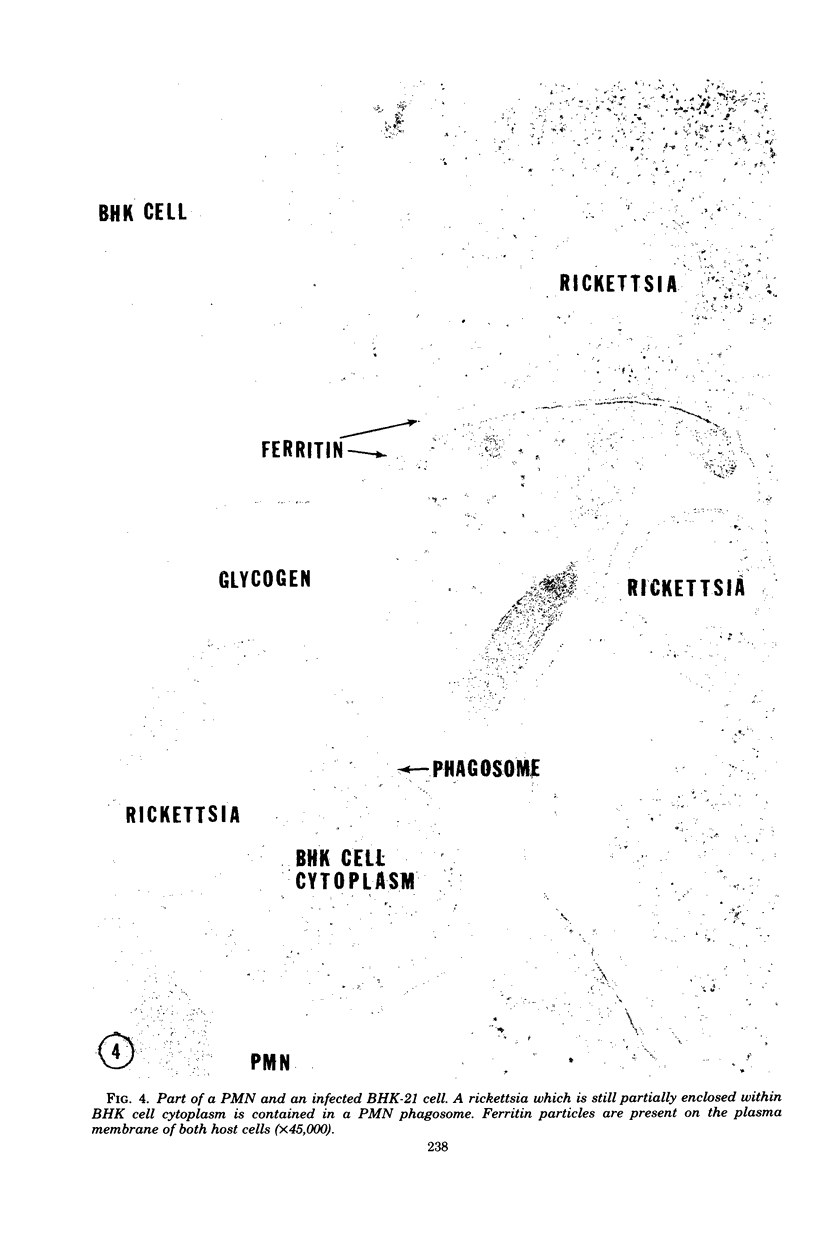
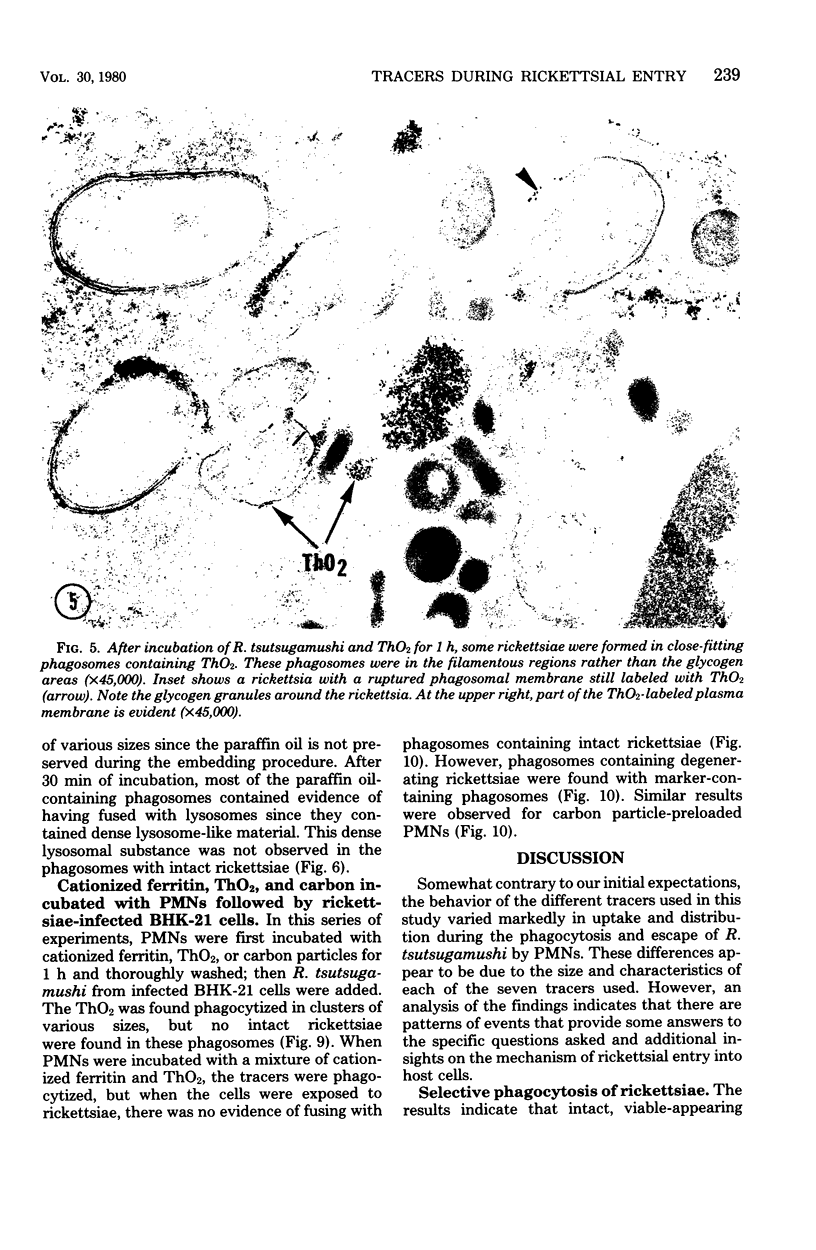
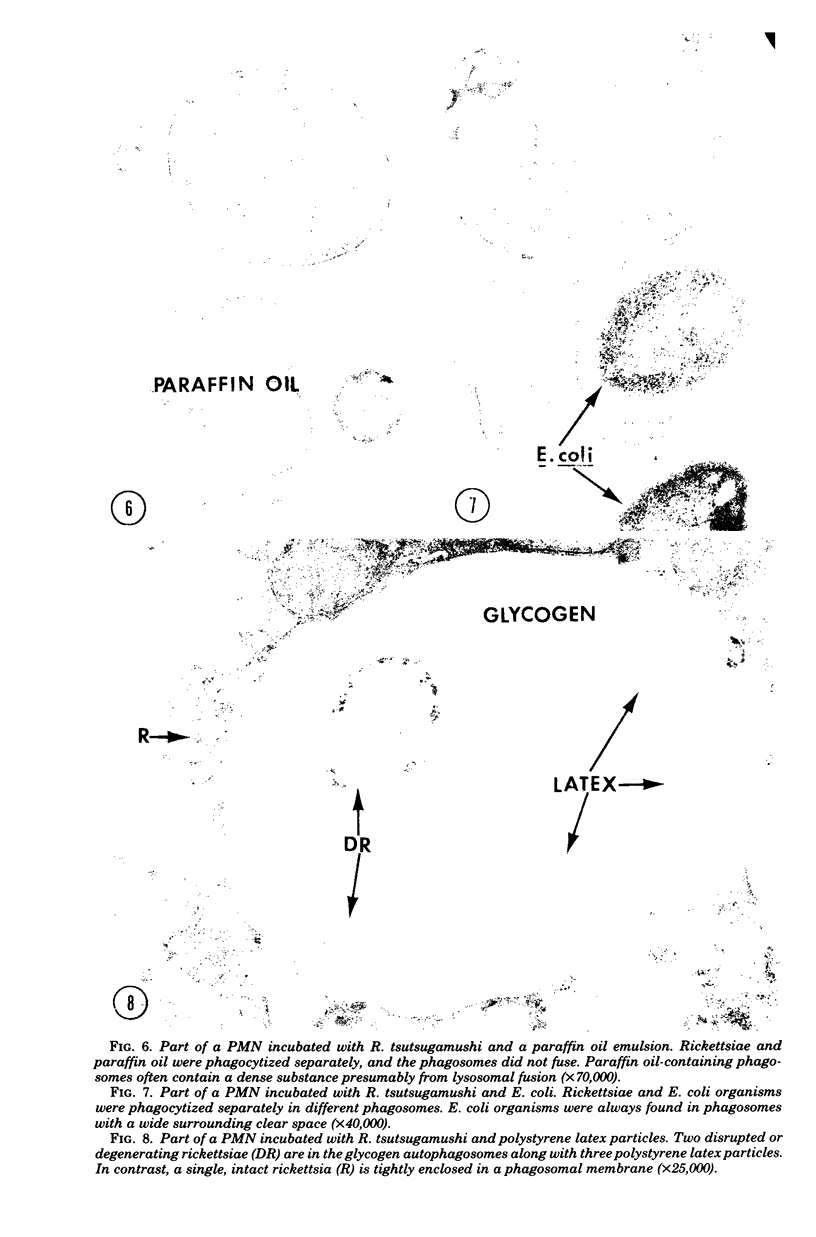
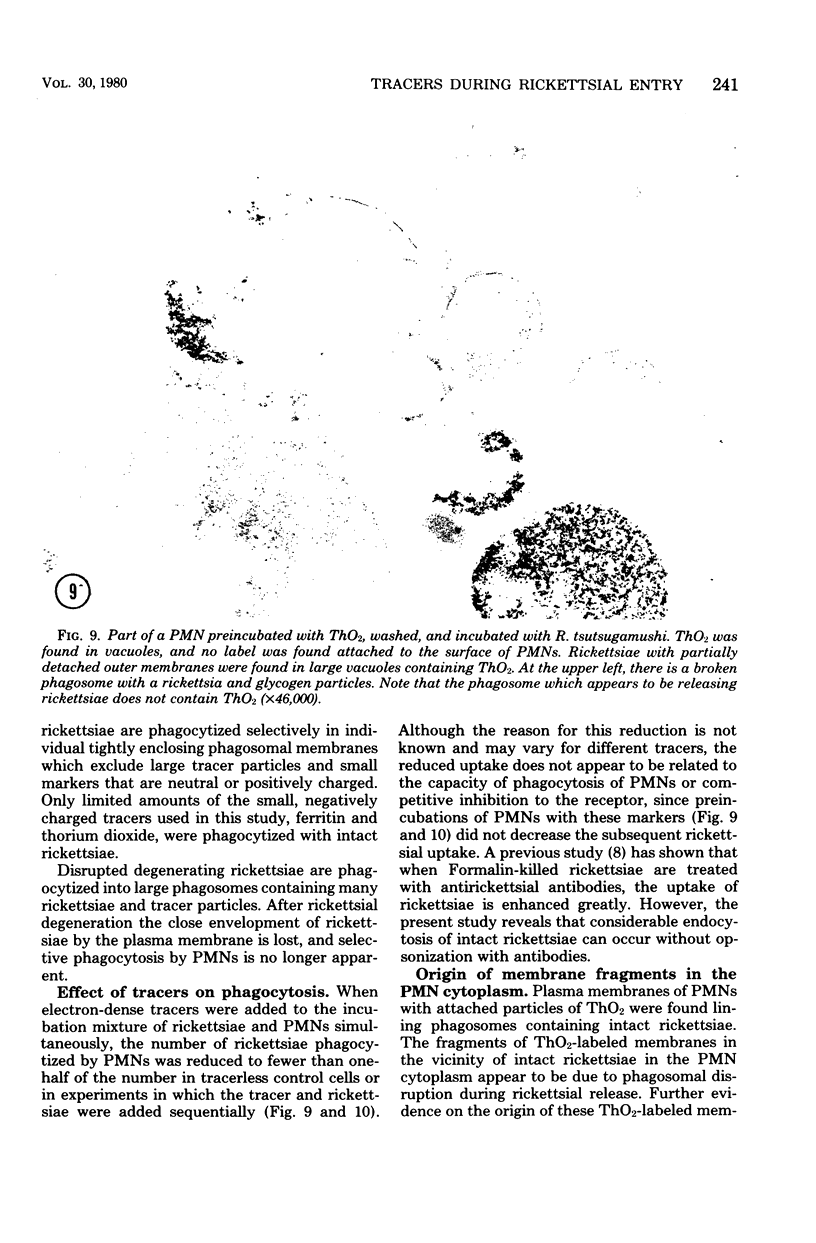
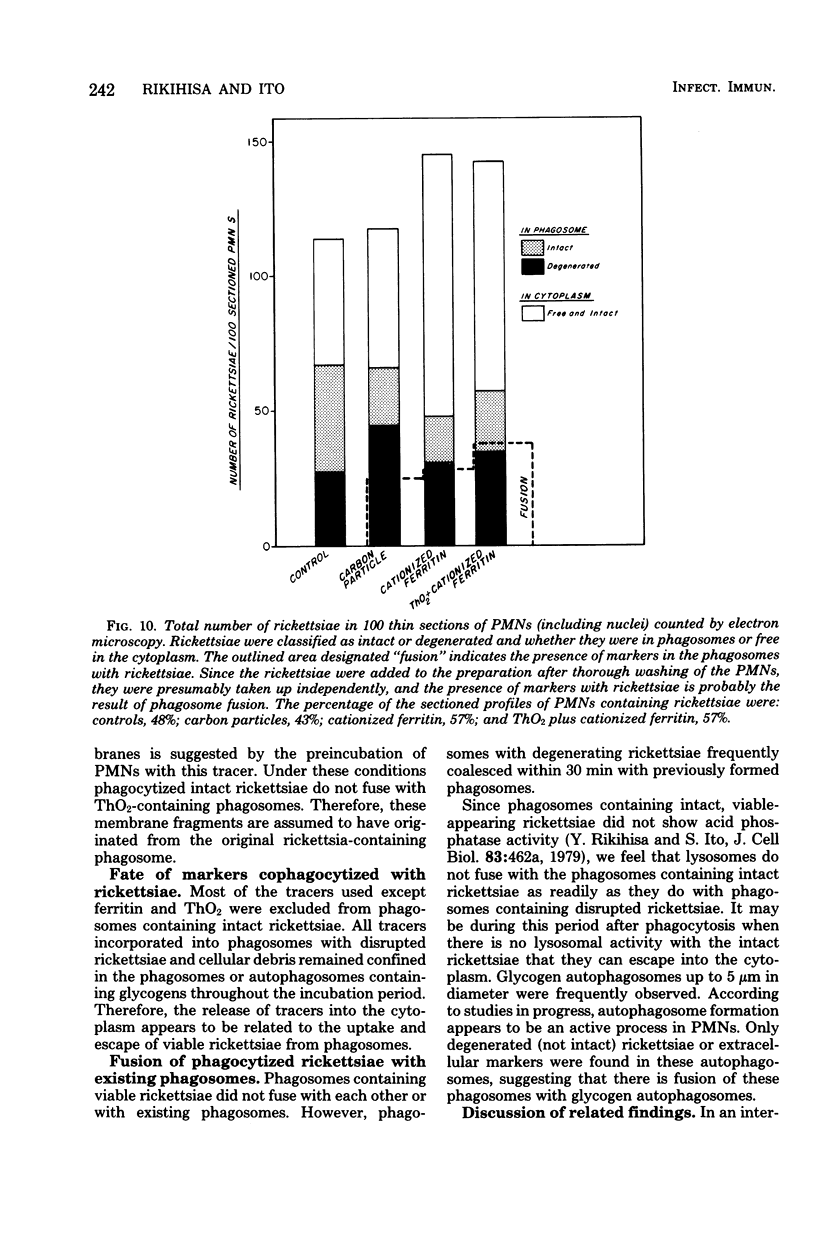
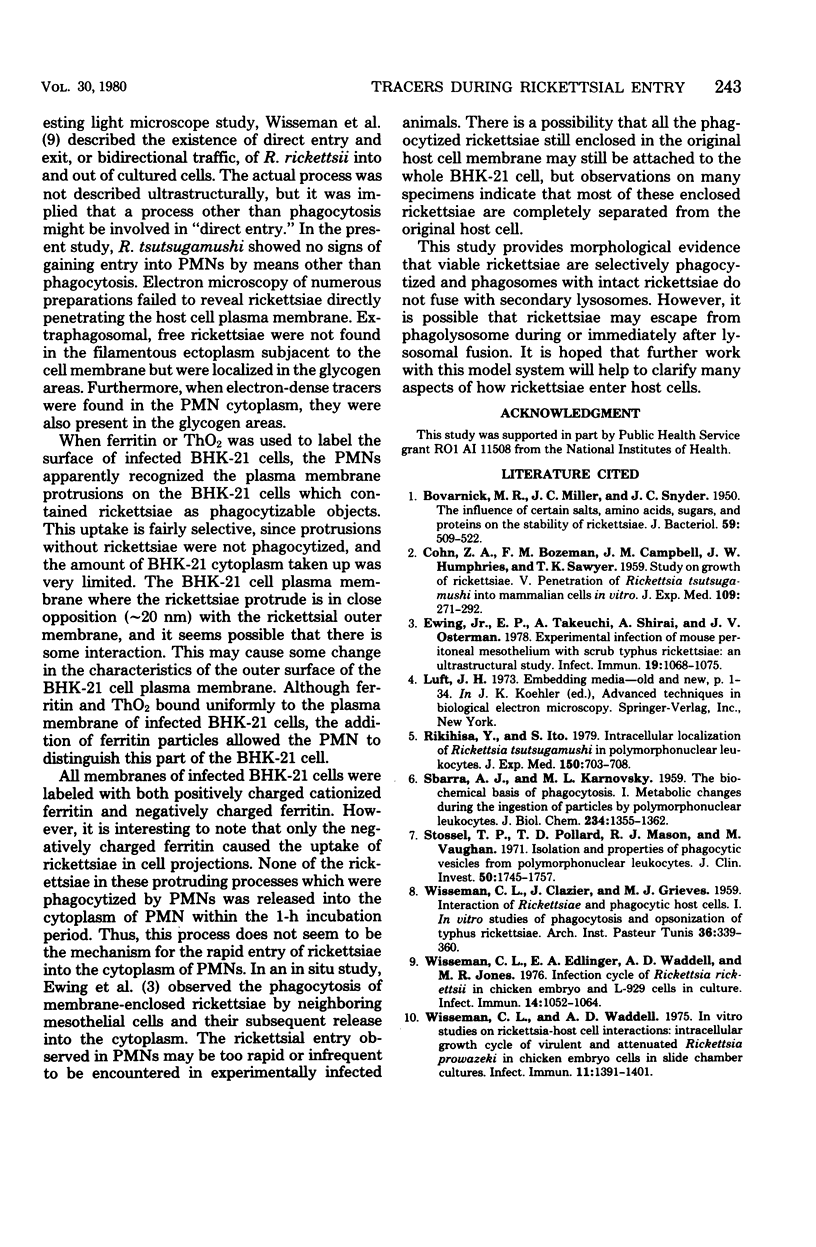
Images in this article
Selected References
These references are in PubMed. This may not be the complete list of references from this article.
- BOVARNICK M. R., MILLER J. C., SNYDER J. C. The influence of certain salts, amino acids, sugars, and proteins on the stability of rickettsiae. J Bacteriol. 1950 Apr;59(4):509–522. doi: 10.1128/jb.59.4.509-522.1950. [DOI] [PMC free article] [PubMed] [Google Scholar]
- COHN Z. A., BOZEMAN F. M., CAMPBELL J. M., HUMPHRIES J. W., SAWYER T. K. Study on growth of Rickettsia. V. Penetration of Rickettsia tsutsugamushi into mammalian cells in vitro. J Exp Med. 1959 Mar 1;109(3):271–292. doi: 10.1084/jem.109.3.271. [DOI] [PMC free article] [PubMed] [Google Scholar]
- Ewing E. P., Jr, Takeuchi A., Shirai A., Osterman J. V. Experimental infection of mouse peritoneal mesothelium with scrub typhus rickettsiae: an ultrastructural study. Infect Immun. 1978 Mar;19(3):1068–1075. doi: 10.1128/iai.19.3.1068-1075.1978. [DOI] [PMC free article] [PubMed] [Google Scholar]
- Rikihisa Y., Ito S. Intracellular localization of Rickettsia tsutsugamushi in polymorphonuclear leukocytes. J Exp Med. 1979 Sep 19;150(3):703–708. doi: 10.1084/jem.150.3.703. [DOI] [PMC free article] [PubMed] [Google Scholar]
- SBARRA A. J., KARNOVSKY M. L. The biochemical basis of phagocytosis. I. Metabolic changes during the ingestion of particles by polymorphonuclear leukocytes. J Biol Chem. 1959 Jun;234(6):1355–1362. [PubMed] [Google Scholar]
- Stossel T. P., Pollard T. D., Mason R. J., Vaughan M. Isolation and properties of phagocytic vesicles from polymorphonuclear leukocytes. J Clin Invest. 1971 Aug;50(8):1745–1747. doi: 10.1172/JCI106664. [DOI] [PMC free article] [PubMed] [Google Scholar]
- Wisseman C. L., Jr, Edlinger E. A., Waddell A. D., Jones M. R. Infection cycle of Rickettsia rickettsii in chicken embryo and L-929 cells in culture. Infect Immun. 1976 Oct;14(4):1052–1064. doi: 10.1128/iai.14.4.1052-1064.1976. [DOI] [PMC free article] [PubMed] [Google Scholar]
- Wisseman C. L., Jr, Waddell A. D. In vitro studies on rickettsia-host cell interactions: intracellular growth cycle of virulent and attenuated Rickettsia prowazeki in chicken embryo cells in slide chamber cultures. Infect Immun. 1975 Jun;11(6):1391–1404. doi: 10.1128/iai.11.6.1391-1401.1975. [DOI] [PMC free article] [PubMed] [Google Scholar]



